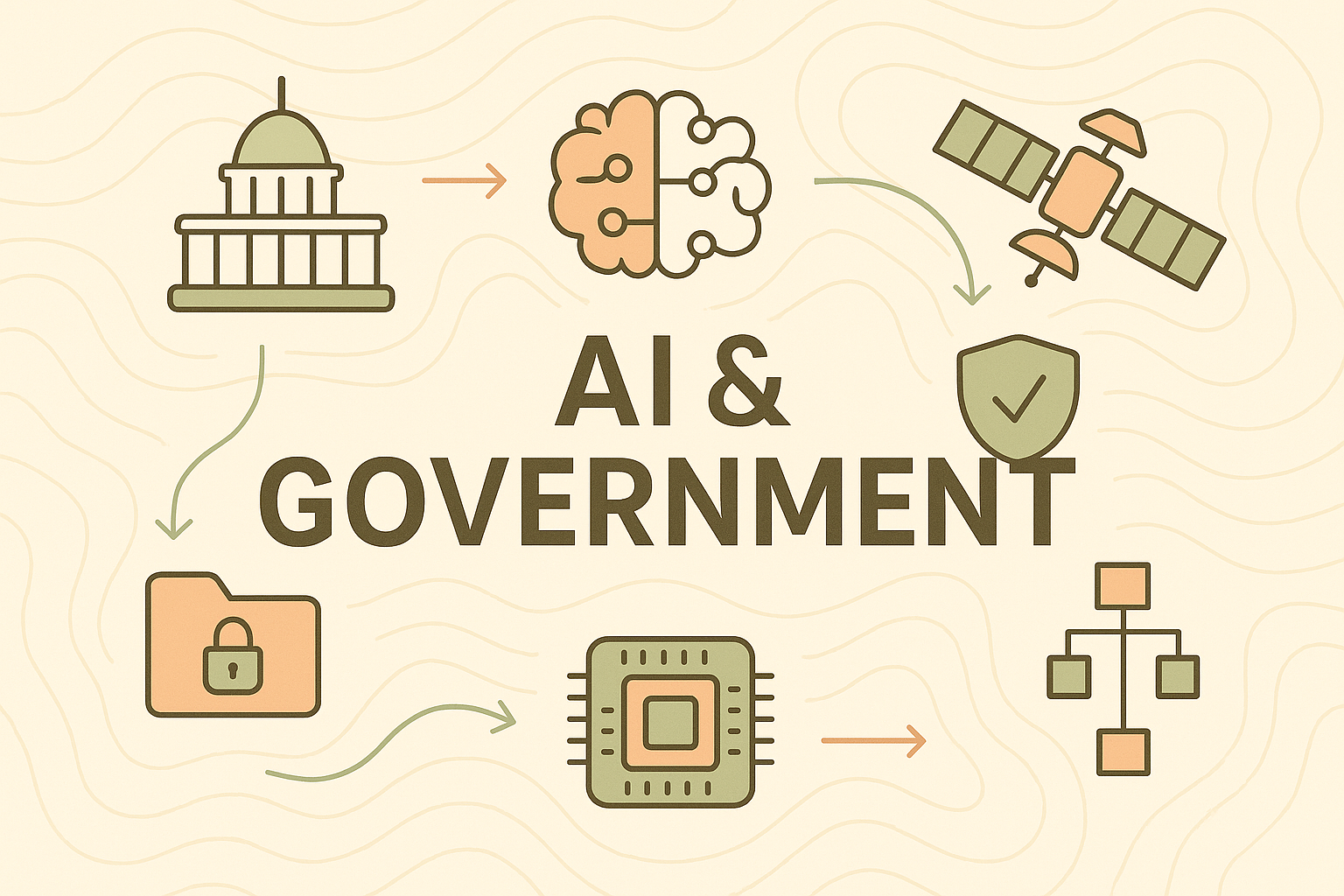The State and the Singularity: How Governments Are Shaping AI

Artificial intelligence is no longer just the domain of Silicon Valley startups and research labs. In 2025, governments across the globe are asserting themselves as key players in the development, deployment, and regulation of powerful language models and AI systems. The convergence of state authority and machine intelligence marks a new era—one where national priorities and AI capabilities are becoming tightly intertwined.
The implications are profound. From national security to economic strategy, AI is now a matter of public interest, geopolitical leverage, and regulatory focus. Governments are no longer just referees in the AI race—they're now builders, funders, and watchdogs.
The New Institutional Landscape
In the United States, the clearest sign of this shift came with the establishment of the AI Safety Institute (AISI) by the National Institute of Standards and Technology (NIST). Mandated by President Biden's Executive Order on AI in late 2023, AISI's mission is to create a formal framework for evaluating the safety, trustworthiness, and alignment of advanced AI systems.
To execute this mandate, NIST launched the AI Safety Institute Consortium (AISIC) in early 2024—a sweeping collaboration that now includes over 200 members. This includes foundational model leaders like Anthropic, OpenAI, Microsoft, Google DeepMind, and NVIDIA, as well as academic institutions, standards bodies, and civil society organizations.
AISIC is tasked with creating the protocols and testing environments that will become the de facto gatekeepers for future AI deployment—including red teaming, risk evaluation metrics, and benchmark safety tests. Participation in AISIC is voluntary for now, but the writing is on the wall: certification, compliance, and partnership with state actors are becoming the cost of doing business in the AI space.
The Players — Who’s Involved?
The AI-government convergence is creating a new kind of public-private partnership. Here are the major players at the intersection:
Foundational Model Developers:
- Anthropic: Its Claude model is central to AISIC safety evaluations and is helping to shape value-aligned frameworks using "Constitutional AI."
- OpenAI: GPT-4o and other models are already being evaluated in collaboration with federal agencies.
- Google DeepMind: Plays a prominent role in UK safety efforts and contributes to international AI standards.
- Microsoft: Through Azure and its partnership with OpenAI, Microsoft is embedding LLMs across government environments.
Defense & Intelligence Contractors:
- Palantir: A major government AI contractor, powering military intelligence and logistics.
- Anduril: Builds autonomous defense systems and AI-powered drones.
- BigBear.ai: Provides AI for battlefield awareness and strategic simulation.
- Scale AI: Delivers labeled data and red-teaming services for the DOD and IC agencies.
Infrastructure Providers:
- NVIDIA: Core supplier of AI chips to national labs and defense agencies.
- AWS GovCloud / Azure Government: Provide secure AI deployment environments for classified workloads.
The Motivations Behind the Shift
Why are governments moving so quickly into the AI space?
- National Security: From misinformation to military applications, unchecked AI poses real risks. States want control over strategic technologies.
- AI Alignment and Safety: Policymakers recognize that existential and operational risks from frontier models must be evaluated with public oversight.
- Procurement and Efficiency: Governments see LLMs as tools for automating operations, citizen services, and data analysis.
- Geopolitical Leverage: The AI race is a new cold war—whoever controls intelligence infrastructure holds global power.
- Economic Competitiveness: AI is a GDP engine. Government support is a bet on national industrial advantage.
What Comes Next: The Algorithmic State
As AI becomes embedded in public institutions, several trajectories are emerging:
- Certification: Governments may require models to be "licensed" for public or commercial use.
- Specialized Models: Agencies may develop domain-specific LLMs for law, defense, and healthcare.
- Public Infrastructure: AI may be treated like telecom or utilities—regulated, subsidized, and standardized.
- Red Teaming & Testing Labs: States may build advanced simulation environments to test models for robustness, deception, and failure modes.
- Global Fragmentation: As AI becomes a core part of national identity and power, we may see diverging technical and ethical standards by region.
Investor Takeaway
The convergence of AI and government is not a temporary alignment—it's the formation of a new ecosystem. Companies that align early with public sector goals will gain access to long-term contracts, privileged partnerships, and insulation from the regulatory headwinds that will challenge less prepared competitors.
In 2025 and beyond, AI isn’t just about innovation. It's about alignment—with markets, with users, and now, increasingly, with the state.
Disclosure: This article is editorial and not sponsored by any companies mentioned. The views expressed in this article are those of the author and do not necessarily reflect the official policy or position of NeuralCapital.ai.